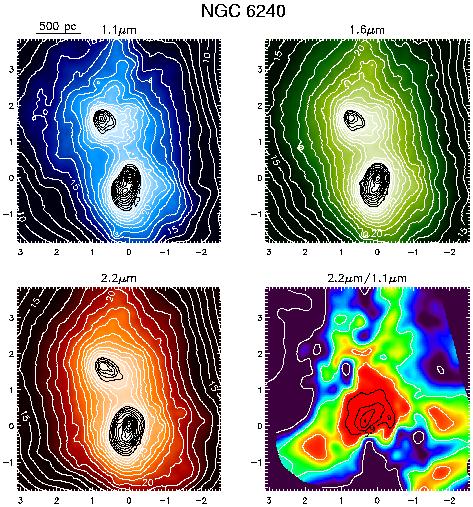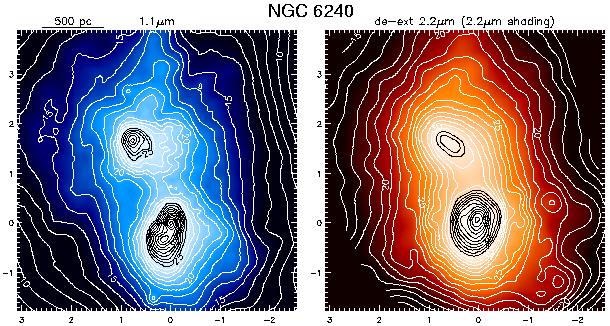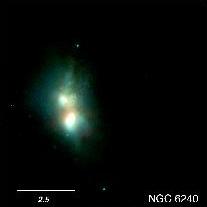


The double nuclei in NGC 6240 are separated by
1.6" N-S (0.8 kpc) and the southern nucleus is relatively brighter
at long wavelengths. The reddening peaks to the north and slightly east
of the southern nucleus. In the radio continuum, there are also two
nuclei but their separation is only 1.4" (Carral et al. 1990). The mm-wave
CO(2-1) emission peak is located between these nuclei (Tacconi et al. 1999,
Bryant & Scoville 1999). In addition, the near-infrared CO-bandhead
velocity dispersion of giant stars exhibits an increase between the nuclei
(Tacconi et al. 1997), all of which indicate a significant mass
concentration (perhaps largely interstellar gas) between the nuclei.
Shaded contour plots of the extinction corrected
2.2 µm emission are shown together with the 1.1
µm (upper left)
observed emission. In both panels, the contours and shading are
logarithmic with the contours spaced by factors 21/2. (The level
values are the same as for the figure above). The arcsec displacements
in RA and DEC, given along the borders are measured from the 2.2
µm in
all frames. At the upper left, a length bar is drawn. For the ratio image,
both the 2.2 and 1.1 µm images were smoothed with the same adaptive
smoothing and then smoothed with a Gaussian FWHM = 0.2" in
calculating the 2.2 µm opacity from Eq. 3 (see text). In
cases where a
strong point-source or variable background contaminated the 2.2 µm
image, the extinction corrected image was derived for 1.6
µm. For the
galaxies with strong point-sources, the PSF was fit to the source and then
subtracted and replaced by a Gaussian with the proper integrated flux (see
text - NGC 7469, IRAS 08572+3915, IRAS 05189-2524, PKS 1345+12, IRAS 07598+6508, Mrk 1014 and 3C48).


